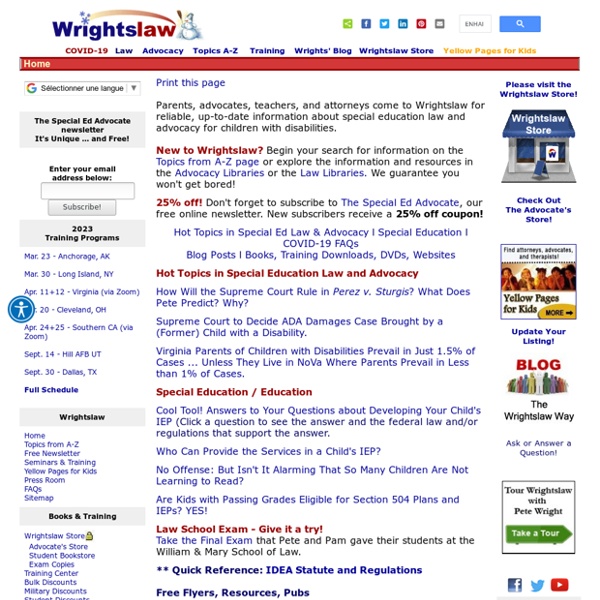



The Written Word Center for Dyslexia and Learning Take Flight: A Comprehensive Intervention for Students with Dyslexia is a two year Orton-Gillingham based curriculum written by the staff of the Luke Waites Center for Dyslexia and Learning Disorders at Texas Scottish Rite Hospital for Children (TSRHC) in Dallas, Texas. It was built on the successes of three previous dyslexia interventions developed by the staff of TSRHC: Alphabetic Phonics, Dyslexia Training Program, and TSRH Literacy Program. Take Flight is a curriculum that is evidence-based and backed by research.
Adult Protective Services (APS) - Protection & Advocacy Page Content Effective July 1, 2013, legislation was passed by the General Assembly to expand the Department's current Elder Abuse and Neglect Program (now Adult Protective Services Program) to prevent abuse, neglect, and financial exploitation of people with disabilities between the ages of 18-59 living in the community. The Adult Protective Services Program is locally coordinated through 40 provider agencies, which are designated by the Regional Area Agency on Aging and the Illinois Department on Aging. Case workers from the Adult Protective Services Provider Agencies conduct investigations and work with adults age 60 or older and adults age 18-59 with disabilities in resolving the abuse, neglect, or financial exploitation situation. All Adult Protective Services caseworkers are trained and certified by the Department. Contact
Special Need & Education Resources for Educators Special Education Resources By Topic Accommodations and Environment Curriculum Support IEP Resources Behavior Management Special Education Inclusion Understanding that special education resources are applicable to both general education and special education teachers alike, TeacherVision provides resources that can be used as part of an IEP both in the general education classroom and in specialist resources rooms. Our resources have been curated from leading special education partners and publishers, and are easily categorized for the most common uses by both generalists and specialists. What Is Special Education?
How to Choose a Co-Teaching Model 6 Models of Co-Teaching: Pros and Cons One Teaching, One Observing: As a supervisor, I’ve seen this model implemented both with purpose and without. It takes time to develop a working relationship with another teacher. When the relationship isn’t working, this model appears more often, and often without purpose. 100+ Social-Emotional Skills IEP Goals [The Complete List] Nov 16 2020 Social-emotional IEP goals make it possible for educators to support the mental health of high-risk learners. Social-emotional skills form the foundation of how students interact with their peers, respond to stressors, and process their thoughts and feelings both in and out of the classroom. The goal of social-emotional learning is for students to develop five core competencies: Self-AwarenessSocial AwarenessSelf-ManagementRelationship SkillsResponsible Decision Making When equipped with these competencies, children are better prepared to socialize productively and understand their emotions.
Resources for Supporting Learners with Disabilities The devices provided by your school or district have accessibility features built into their hardware and browsers. Below are links to each platform’s accessibility features and settings that can support aspects of learning like vision, hearing, motor, reading/dyslexia and attention needs. Before trying a new tool or product, consider how you can provide individualized supports and accommodations for the products you are already using and that students are familiar with. Chunking directions into smaller steps or providing sentence starters could be simple ways to support students without introducing a new tool. Also, check out the products your district has already vetted and purchased, and if those do not meet your needs, then please feel free to explore this library.
New Strategies in Special Education as Kids Learn From Home Around the nation, K–12 schools are frantically trying to adapt to abrupt closures during the coronavirus. But while all teachers are struggling with the new normal, special education teachers in particular are facing unparalleled challenges transitioning both their teaching—and their students and families—to home-based instruction tailored to each student’s needs. “When you say ‘special education,’ you are talking about an umbrella of ages, interests, abilities, and disabilities, within which are individual needs identified by their Individualized Education Program,” explains Margaret Shafer, a third-grade teacher in Morton, Illinois, echoing questions raised by our readers, who wonder how they can provide sufficient support for each of their students who each have very different requirements to learn.
Research: Supplemental Security Income Program Entry at Age 18 and Entrants' Subsequent Earnings In determining Supplemental Security Income (SSI) eligibility and payment levels for child applicants and recipients, the Social Security Administration attributes part of parental income to the child using a process called deeming. Parental-income deeming ends at age 18, and many youths with severe disabilities who were income-ineligible for SSI as minors can become income-eligible as adults. This article provides evidence that substantial numbers of youths apply for SSI as soon as they turn 18.